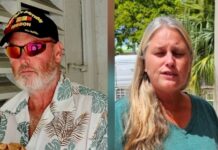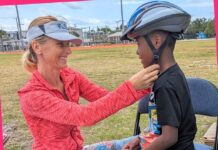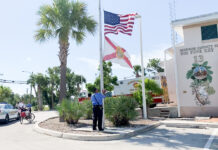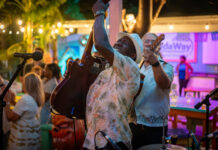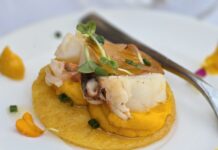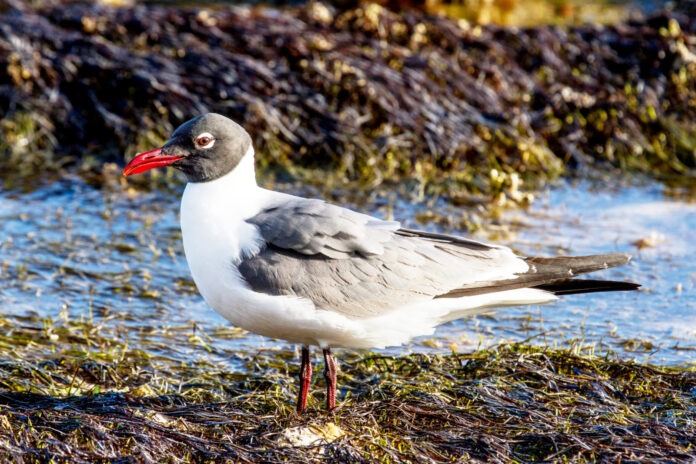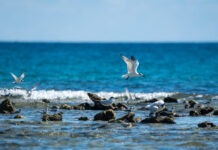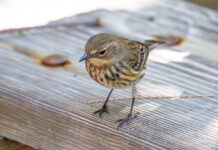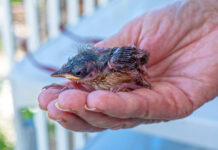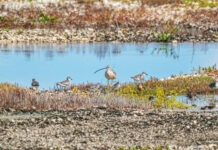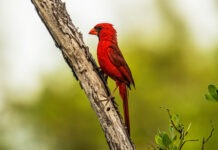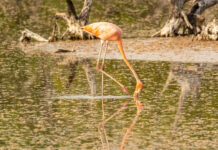Why aren’t there any blue jays in the Lower Keys? — Paul Z. Bandit
It’s pretty hard to avoid blue jays in the eastern half of North America — except down here. Key West is below both the squirrel line and the blue jay line, that line being anything south of Marathon. Why? The answer is nuts.
Blue jays (and squirrels) are acorn junkies, aka oak tree nut-dependent, but it’s not all they eat. Blue jays will eat butterflies, spiders, bugs, berries, the eggs of other birds in the nest, nestlings, mice, slow-moving small bats and small songbirds that have been struck unconscious after colliding with windows. Blue jays have also been known to imitate the calls of red-shouldered hawks to scare other birds into dropping their food so they can steal it. But acorns are a large and consistent part of their diet.
In one study, acorns and their like made up 43% of the blue jay’s annual diet, and 67% of their diet from October to March in the colder latitudes. They tend to build up caches of acorns near their breeding sites and can fly with up to five acorns in their mouth and throat at the same time. In one study, two jays that were tracked over three days made 1,270 and 1,959 visits to two pin oak trees, taking 3,175 and 4,897 acorns each.
There are live oaks in the Keys, usually as part of rockland hammocks. But the Keys are on the very edge of the live oaks’ range, and they slowly peter out, getting replaced by more tropical species, as you move from Key Largo to Marathon. Below that they disappear from the habitat. Hence the lack of blue jays in the Lower Keys.
Looking at eBird data, there have been three reports of them south of Moser Channel in the last 20 years, which makes sense as birds do sometimes go on walkabout. (Flyabout?)
I like the fact that we don’t often see blue jays in these parts, largely because I am no longer inured to their presence. And then I get all excited about them when I emerge back up onto the mainland.
Why do some birds have odd names? Blue-footed booby. Tufted titmouse. Tinkling cisticola. Was alcohol involved in the naming process? — Nanook of the North
For the same reason Dick Cheney will probably be the last famous person named Dick in the English speaking world. Because like sandbars and moral codes, language shifts and changes. Today’s titillating diction is yesterday’s innuendo-free commonplace usage, and nearly any term is vulnerable to being turned into a double entendre.
If enough people said, “Oh, man, that dude got hit right in the chicken corn chowder,” or “Check out the spokes on that woman,” those terms would also probably eventually take on cruder meanings.
Birds in the booby family are called boobies because they tend to breed on remote islands and not have a lot of fear of humans, so they were easy-to-kill meat for protein-starved sailors in the late 1500s, and back then, booby meant stupid, full stop. It came into a term of usage to describe human mammaries in the late 1920s, doing a bit of a linguistic slide from the term bubbies, which is also from the late 1500s.
Tit used to mean small; mouse used to mean tiny. So titmouse is two adjectives smashed together to create a noun used as the name for a genus of diminutive songbirds. The word was apparently once used to describe upper deck female secondary sex characteristics in Old English, spelled titt at the time. But that term dropped out of usage for several centuries. It came back as a reinvented term to mean female human embonpoints in the late 1920s, which was apparently a great era for bird name/lady parts linguistic crossovers.
Tinkling began to be used as a word to describe a series of soft, ringing sounds in the 1300s. It didn’t come to mean piddle, widdle or wee until the 1960s.
To answer your second question about whether they were drinking when they named these birds: Yeah, probably.
Is a flock of seagulls family? — The Aptly Named Joy
I’m just going to assume you’re talking about the most famous band to come out of Liverpool, England, the early ’80s synth-heavy new wave act A Flock of Seagulls. And in that case, the answer is yes, at least partially. Founding members Mike Score and Ali Score were/are brothers. The other two members, Frank Maudsley and Paul Reynolds, were just guys from the neighborhood. Mike – the guy with the hair shaped like a combination of an ironing board, a paper airplane and a seagull wing – wrote and sang most of the songs, while Ali was the drummer.
I had a vague recollection of A Flock of Seagulls playing (I think) at The Reach sometime in the early ’90s, when I first moved here, and feeling too cool to go see them. (I was more of a Ramones guy.) And I think it did happen, because with a little Googling I found out that Mike Score actually lived in Key West for a while after the band’s heyday, having a brief second career as a boat builder.
On the odd chance you are talking about birds, it’s a little more complicated.
We have four or five species of gulls here, the most common by several magnitudes being laughing gulls. Laughers breed all over Florida, including the Keys. I was never sure where until I found a paper from 1986 saying they nested mostly in Florida Bay, and that the timing of their breeding and the size of their colonies were highly variable during a six-year study. I assume that info still holds, though the authors of the paper thought the colonies might have been somewhat nascent and growing, so they may have increased in size and success rates since then.
Young laughing gulls tend to be fed by their parents for the first 10 to 14 days after they learn to fly, and they remain in the general area of the colony for two to three weeks. And then something called post-breeding dispersal happens, where the birds move on to other places.
I guess the short answer is, if you happen to be in a boat in Florida Bay from April through August, and you see a small flock of laughing gulls, they may be family. And if you see a flock of laughing gulls down in the Lower Keys, there may be family members in it, but family isn’t the organizing force.



